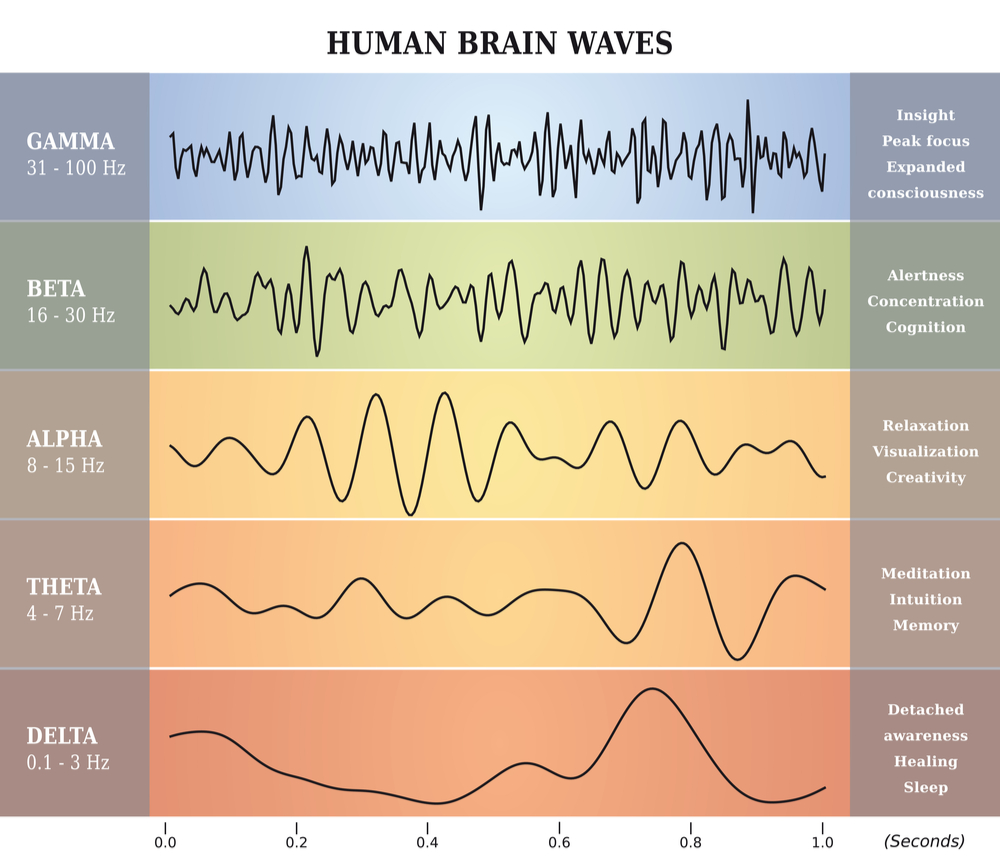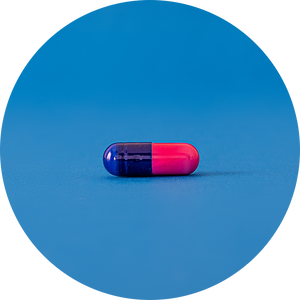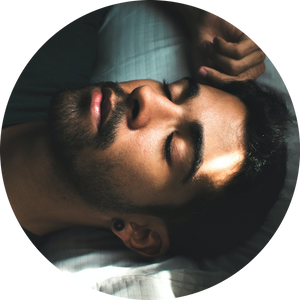For most people, sleep is just something you do in the dark of the night.
But a lot's going on when you close your eyes for the night.
Sleep can be broken into types and four stages, each of which involves unique and important processes to your health and energy.
There are two primary types of sleep: rapid eye movement (REM) sleep and non-REM sleep (go figure), and the latter consists of three stages. Throughout the night, your body cycles through these types of sleep, and how each person moves between these stages can vary dramatically.
Below is a closer look at these distinct types of sleep, why they matter, and how you can get better quality sleep by understanding what your body is doing.
What Is Non-REM Sleep?
Non-REM sleep, also known as quiescent sleep, consists of three distinct sleep stages. Each stage has unique qualities, such as changes in core body temperature, brain activity, and movement.
The higher the stage numerically, the deeper the sleep. Below is a closer look at each stage of NREM sleep, how they differ from one another, and how long each stage lasts.
 Stage 1
Stage 1
Stage 1 sleep is the first sleep stage, and it marks the first transition away from being awake and alert. As you enter stage 1 sleep, many things begin to happen. First, your muscles begin to relax, though they can still move. If you've ever woken up from a strong jerk through your body that may have felt like you were falling (also known as a hypnagogic jerk) it was most likely while you were in stage 1 sleep.
In addition to the relaxation of your muscles, your respiration rate, heart rate, and core body temperature begin to decrease incrementally during stage 1 of NREM sleep.
In addition to these changes, your brain will start to have what is known as alpha and theta brain wave activity on an electroencephalogram (EEG). Stage 1 sleep is the closest stage to being conscious, and for that reason, it's relatively easy to be woken during this light sleep stage. Stage 1 sleep typically lasts from five to ten minutes.
Stage 2
Stage 2 sleep is the next non-REM sleep stage, and it continues the trend of further relaxation. Blood pressure, heart rate, and core body temperature continue to decrease.
Entering stage 2, you're less likely to be woken up by external stimuli than stage 1, and eye movements stop.
One of the key differences from stage 1 to stage 2 is that your brain's "alpha" waves are replaced with short bursts of electrical impulses known as "sleep spindles" along with theta brain waves. The exact purpose of this unique brain activity is not entirely known, but it's thought to impact memory processing and arousal regulation.
Stage 2 sleep lasts anywhere from ten to thirty minutes.
Stage 3
The transition to stage 3 sleep represents the transition to deep sleep. Stage 3 sleep is one of the two stages of deep sleep, and it plays an important role in the rejuvenating qualities of sleep. From stage 1 sleep to deep sleep can take 20 to 30 minutes.
While in stage 3, it becomes quite difficult for external stimuli to wake you up. By this point, your muscles have fully relaxed, your breathing has slowed, and your brain activity looks starkly different from your brain activity while you're awake. When observed with an EEG, the brain waves present during stage 3 are slow delta waves.
What Is REM Sleep?
REM sleep represents the deepest stage of sleep, and the transition from stage 3 to REM is interesting.
When you look at the brain waves present between these two stages, the activity during REM sleep almost resembles the brain waves of someone that's awake.
The main theory behind this transition to high activity is that it is the mechanism behind your ability to dream.
REM is also unique in that your eyes are moving back and forth (hence the name), and your voluntary muscles are entirely paralyzed. Muscle paralyzation is beneficial as it may be dangerous if you accidentally "act out" a dream.
The combination of high brain activity and little muscle activity is why REM sleep is sometimes referred to as paradoxical sleep.
How Can I Get Better Quality Sleep?
Now that you know the stages of sleep, it's easier to understand what doctors and healthcare professionals mean when they talk about "getting quality sleep."
The basics of sleep quality and healthy sleep are that you want to spend more time in the deeper stages of sleep, as these are associated with the many benefits of sleep, including supporting your immune system, memory consolidation, and feelings of rejuvenation and energy the next day.
Below is a closer look at ways you can promote quality sleep. If you find yourself experiencing sleepiness, lacking a good night’s sleep, sleep deprivation, sleep disorders, or insufficient total sleep, these tips may help facilitate better rest.
Sleep Hygiene
The first step you should take towards improving your sleep health is to try and improve your sleep hygiene with better sleep habits.
Your sleep hygiene refers to what you can do surrounding sleep time to facilitate a better night’s sleep or longer sleep. For those without sleep disorders, this might consist of creating a solid nighttime routine. For those with sleep apnea, it might entail using a sleep apnea machine to prevent an obstructed airway and avoid awakening due to pauses in breathing.
Before you go to bed, there are many things you can do to facilitate an easier time getting to sleep and improve the chances of your sleep being restorative. Some of the best habits for sleep include:
- avoiding bright lights an hour before bed
- avoiding caffeine consumption in the evening
- not exercising within an hour of bed
- setting an alarm to wake up at the same time every day, including weekends
One of the best things you can do is ensure your sleeping environment is conducive to quality sleep and healthy sleep patterns. This should include finding comfortable bedding, setting the room to a comfortable temperature, and eliminating as many external stimuli as possible. The darker and quieter your sleeping environment, the more likely you'll experience a good night’s sleep.
When it comes to waking up, the best thing you can do is get out of bed and get some exposure to the sun quickly. The brain has a region known as the suprachiasmatic nucleus (SCN), and it's the pacemaker of your circadian rhythm. It uses light as key stimuli to allow you to fall asleep and wake up naturally, and getting some morning rays of sunshine may help you wake up, and feel awake, faster.
Medication
Getting to sleep involves a number of chemical messengers that help reduce brain activity and help you fade into sleep and stay asleep. If you're dealing with a lack of sleep or trouble sleeping through the night, a number of sleep aid options may help. Over-the-counter options include melatonin supplements, teas, gummies and more. Rex MD also carries non-habit-forming prescription-grade sleeping medications to help you get enough sleep, if appropriate.
The Takeaway
In summary, there are two kinds of sleep: rapid eye movement sleep and non-rapid eye movement sleep. Within these, there are four distinct stages of sleep that your body cycles through each night. Going from light sleep to deep sleep and back to light sleep occurs repeatedly throughout the night.
While there is still a lot to be learned about the true purpose of these sleep stages, the importance of sleep and deep sleep is fairly well understood. If you're having difficulty sleeping, lifestyle changes should be your first effort. A healthcare provider can help you rule out other medical conditions that might be contributing to low energy and a lack of sleep, and prescription sleep aids are another way to get more sleep, when appropriate.












